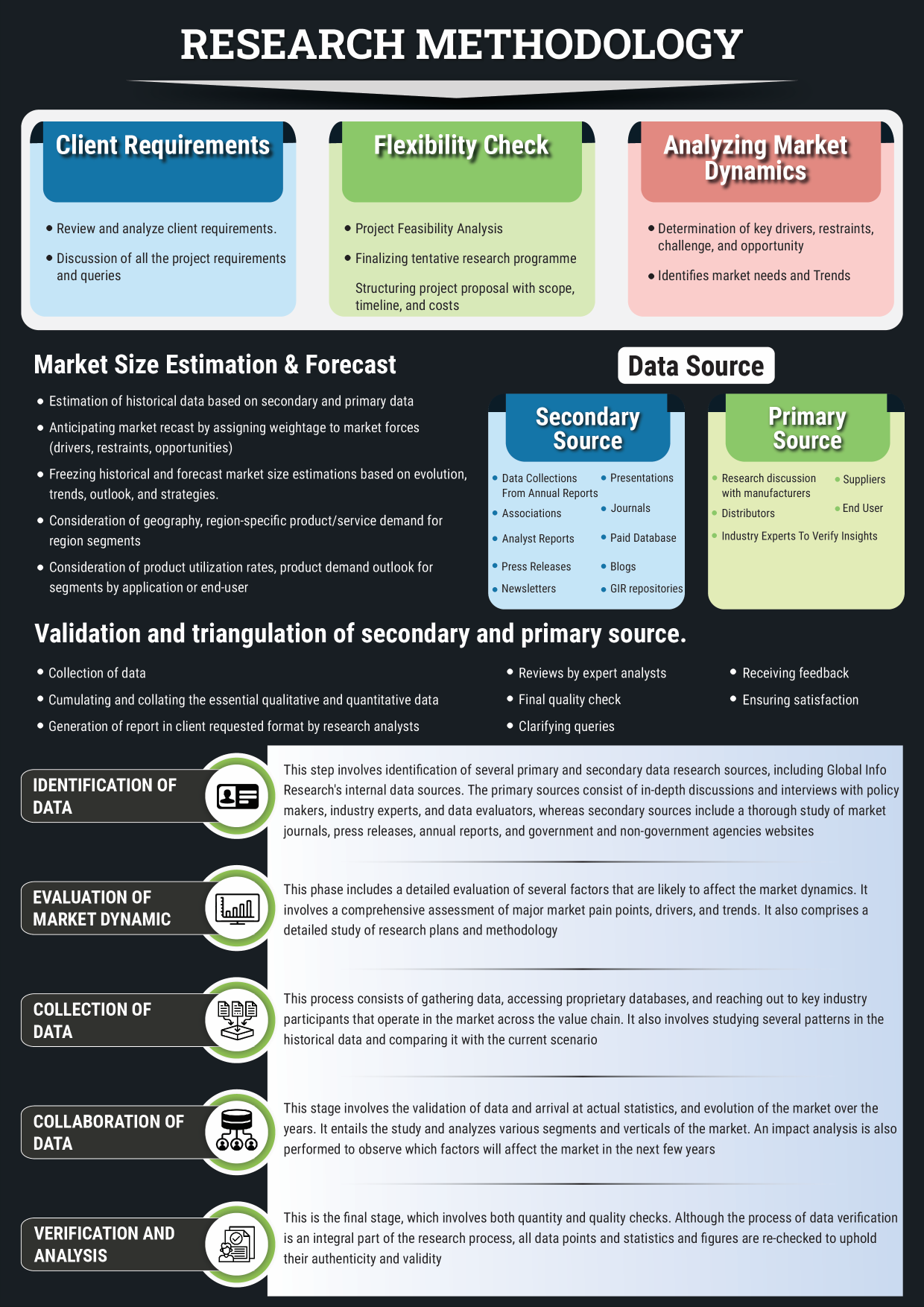Urinary Self-Catheter Market 2025: Growth Driven by Innovation, Accessibility, and Patient Empowerment
The global urinary self-catheter market is undergoing a transformation as healthcare delivery shifts toward home-based and patient-managed solutions. Once limited to hospitals and clinical oversight, urinary catheterization is now a manageable, discreet, and often preferred solution for people managing chronic bladder dysfunction, spinal injuries, or post-operative recovery. By 2025, the market is poised to grow substantially—fueled by innovation, patient empowerment, and an increasing emphasis on cost-effective, decentralized care models.
Market Drivers: Demand Rising Across Age and Condition Profiles
- The rising incidence of neurogenic bladder disorders, urinary retention, and age-related bladder incontinence is creating a steady demand for effective and accessible urinary self-catheter solutions. With global life expectancy increasing, particularly in developed nations, more individuals are managing chronic urinary issues independently at home.
- A shift in healthcare policy—especially in countries prioritizing outpatient and home-based care—has made self-catheterization a viable and often recommended approach. Patients benefit from greater privacy and autonomy, while healthcare systems reduce long-term care costs.
- Additionally, growing patient awareness, improved training resources, and physician support are reducing stigma and promoting confidence in self-use. With product options expanding and becoming more user-friendly, individuals across various demographics are adopting these solutions for daily bladder management.
Innovation: Technology Enhancing Comfort, Safety, and Convenience
Innovation is at the heart of the urinary self-catheter market’s evolution. Product advancements aim to reduce discomfort, prevent infections, and streamline usage for a wider audience.
- Hydrophilic coatings and pre-lubricated catheters improve user comfort and reduce urethral irritation.
- Compact, discreet packaging supports on-the-go usage and helps eliminate social discomfort.
- Sterile, single-use designs minimize the risk of urinary tract infections (UTIs), one of the most common complications of catheter use.
- Connected health solutions—including app-enabled tracking of catheter usage and hydration—are emerging as tools for smarter, personalized bladder care.
- Manufacturers are also exploring biodegradable materials and eco-conscious designs to respond to growing environmental concerns, giving consumers the ability to align their medical needs with their sustainability values.
Regional Market Dynamics: Growth Fueled by Accessibility and Infrastructure
- North America
North America continues to lead the urinary self-catheter market due to its strong insurance frameworks, high awareness levels, and advanced homecare systems. The U.S. and Canada offer extensive training support for users, alongside an active push for home-based healthcare models. - Europe
Europe shows consistent market penetration, especially in countries with well-established healthcare systems such as Germany, the UK, and the Nordics. Supportive reimbursement policies and patient-focused initiatives make the region a stable and growing market. - Asia-Pacific
Rapid healthcare development, an expanding middle class, and an aging population are fueling growth in Asia-Pacific. While countries like Japan and South Korea show high adoption rates, emerging economies like India present untapped potential with targeted awareness programs. - Latin America and MEA
Although adoption in Latin America and the Middle East & Africa remains slower, urban centers are showing promising trends. Efforts by non-governmental organizations, partnerships with local clinics, and educational outreach are critical in building trust and improving access in these regions.
Strategic Considerations: Keys to Market Penetration and Brand Differentiation
To succeed in this expanding market, companies must move beyond product development and address the holistic needs of users.
- Education and Training: Offering user-friendly guides, virtual tutorials, and accessible support lines helps reduce anxiety and improves user compliance.
- Distribution Channels: Partnering with pharmacies, e-commerce platforms, and direct-to-consumer services ensures availability and convenience.
- Affordability Models: Tiered pricing strategies can help reach a wider customer base, from basic users to those requiring premium features.
- Localization: Tailoring product design and marketing to regional preferences, language, and cultural norms increases user engagement and market relevance.
- Regulatory Compliance: Staying ahead of global medical device standards ensures smooth market entry and builds trust among healthcare providers and consumers alike.
Conclusion: A Market Built on Empowerment and Accessibility
As the world moves toward personalized, patient-managed care, the urinary self-catheter market is gaining significant traction. With innovations making devices safer and easier to use, and healthcare systems supporting home-based solutions, the landscape is shifting in favor of self-management.
By 2025, the market will be defined not just by medical necessity, but by autonomy, discretion, and quality of life. Companies that prioritize usability, accessibility, and human-centered design—while aligning with global care trends—are best positioned to lead in this rapidly expanding segment of urological healthcare.
NOTE:
Quants and Trends is proud to offer an extensive portfolio of meticulously researched healthcare market reports, numbering in the thousands. We also provide tailored customization services to ensure our insights align precisely with your strategic objectives and informational needs. For personalized assistance or to discuss your specific requirements, we invite you to get in touch with our team. We also encourage you to request a complimentary sample PDF report. Please visit our Sample Request Page to receive yours today.
Key Market Players
Coloplast
BD
Teleflex
B. Braun
Boston Scientific
Medtronic
Cook Medical
WellLead
Sewoon Medical
Medi-Globe
Amsino
Pacific Hospital Supply
Segmentation By Type
Foley Catheters
Intermittent Catheters
External Catheters
Segmentation By Application
Benign Prostate Hyperplasia
Urinary Incontinence
Spinal Cord Injury
Others
Segmentation By Region
North America (United States, Canada and Mexico)
Europe (Germany, France, United Kingdom, Russia, Italy, and Rest of Europe)
Asia-Pacific (China, Japan, Korea, India, Southeast Asia, and Australia)
South America (Brazil, Argentina, Colombia, and Rest of South America)
Middle East & Africa (Saudi Arabia, UAE, Egypt, South Africa, and Rest of Middle East & Africa)
Market SWOT Analysis
What are the strengths of the urinary self-catheter market in 2025?
The market is driven by increased awareness and adoption of self-catheterization for managing urinary retention, as well as advancements in catheter technology, such as more comfortable, smaller, and user-friendly designs. Additionally, the growing number of patients with conditions like spinal cord injuries and neurological disorders supports demand.
What are the weaknesses in the urinary self-catheter market in 2025?
Despite growing demand, there are challenges related to patient education and the stigma around catheter use. The cost of advanced self-catheterization products can also be a barrier for some patients, especially in developing regions. Additionally, complications like infections may still discourage consistent use.
What are the opportunities in the urinary self-catheter market in 2025?
As healthcare systems across the globe focus on improving patient autonomy and reducing hospital visits, there are opportunities for expanding the market. Innovations in materials and design could lead to more comfortable and hygienic options. The rising prevalence of chronic conditions that require self-catheterization presents a significant growth opportunity.
What are the threats to the urinary self-catheter market in 2025?
Competitive pressures from alternative treatments, such as intermittent catheterization or surgical procedures, may challenge market growth. Regulatory hurdles and reimbursement issues can also impact market expansion. Additionally, concerns over hygiene and the risk of infections could limit widespread adoption of self-catheterization among certain patient groups.
Market PESTEL Analysis
What are the political factors affecting the urinary self-catheter market in 2025?
Government policies on healthcare funding, medical device regulation, and reimbursement will have a significant impact on market accessibility. Changes in healthcare laws, particularly those supporting patient autonomy and at-home care, could further promote the use of self-catheterization.
How do economic factors influence the urinary self-catheter market in 2025?
Economic conditions, such as the affordability of healthcare, insurance coverage, and the cost of medical devices, play a crucial role in shaping market dynamics. In economically developed countries, reimbursement for self-catheterization products may drive market growth, while in emerging markets, cost constraints may limit adoption.
What social factors are relevant to the urinary self-catheter market in 2025?
The growing awareness around urinary health and increasing acceptance of self-catheterization as a legitimate healthcare solution are positive trends. However, societal stigma and lack of education about the benefits of self-catheterization may still create barriers for certain patient groups, influencing adoption rates.
What technological advancements impact the urinary self-catheter market in 2025?
Continuous innovation in materials, catheter design, and technology, such as hydrophilic coatings for easier insertion and antibacterial properties to reduce infection risk, is shaping the market. Smart catheters with features like pressure sensors and remote monitoring could enhance patient care and expand market potential.
What environmental factors are important for the urinary self-catheter market in 2025?
Environmental sustainability is becoming a consideration, with an increasing demand for eco-friendly materials and production processes in the healthcare sector. Companies may face pressure to develop biodegradable or recyclable catheters to meet growing environmental concerns, which could drive product innovation.
What legal factors affect the urinary self-catheter market in 2025?
Regulatory frameworks governing medical devices, including approval processes, safety standards, and intellectual property rights, will continue to influence the market. Legal issues surrounding liability and patient safety, as well as changes in reimbursement policies, will be critical factors for market stakeholders to navigate.
Market SIPOC Analysis
Who are the suppliers in the urinary self-catheter market in 2025?
Suppliers include manufacturers of medical-grade materials such as silicone, PVC, and hydrophilic coatings, along with companies producing specialized equipment for catheter production. Additionally, suppliers also include companies providing packaging, sterilization services, and distribution channels.
What are the inputs required for the urinary self-catheter market in 2025?
Inputs consist of raw materials for catheter production, including polymers and coatings, as well as technology for advanced designs. Additionally, regulatory guidelines, research data for new innovations, and manufacturing capabilities are essential inputs to meet market demand.
Who are the process owners in the urinary self-catheter market in 2025?
Process owners include manufacturers, healthcare providers, and distributors. They manage the production, quality control, distribution, and customer education on the correct usage of self-catheterization products. Regulatory bodies also play a critical role in overseeing the compliance and safety of these products.
What are the outputs in the urinary self-catheter market in 2025?
The outputs are high-quality, user-friendly self-catheterization products, which include various sizes, materials, and designs suited to different patient needs. Additionally, educational resources and patient support systems are crucial outputs to ensure proper usage and optimal health outcomes.
Who are the customers in the urinary self-catheter market in 2025?
Customers include individual patients requiring urinary self-catheterization, healthcare institutions such as hospitals, rehabilitation centers, and long-term care facilities. Insurance providers and medical professionals also play an important role in the market by influencing purchasing decisions and recommending products to patients.
Market Porter's Five Forces
How strong is the threat of new entrants in the urinary self-catheter market in 2025?
The threat of new entrants is moderate. While the market is attractive due to growing demand, the high regulatory requirements and significant investment needed for R&D, manufacturing, and distribution create barriers to entry. Established players with brand recognition and expertise hold a competitive advantage.
What is the bargaining power of suppliers in the urinary self-catheter market in 2025?
The bargaining power of suppliers is moderate. While there are several suppliers of raw materials for catheter production, the need for specialized, high-quality components (e.g., hydrophilic coatings and medical-grade polymers) gives key suppliers some leverage. However, manufacturers can often switch between suppliers if necessary.
How intense is the rivalry among existing competitors in the urinary self-catheter market in 2025?
Rivalry among existing competitors is high. The market has established players with strong brands, but there is significant pressure to innovate and offer better, more comfortable solutions. Additionally, price competition and the need to differentiate based on product quality and customer service intensify competition.
What is the threat of substitute products or services in the urinary self-catheter market in 2025?
The threat of substitutes is moderate. Alternatives like intermittent catheterization, surgically implanted devices, or drug therapies for urinary retention present some competition. However, self-catheterization remains a preferred choice for many due to its non-invasive nature and ability to offer greater autonomy.
How strong is the bargaining power of buyers in the urinary self-catheter market in 2025?
The bargaining power of buyers is moderate to high. Patients have access to multiple product options, and healthcare providers often have the power to influence purchasing decisions. However, reimbursement issues and the need for specific medical requirements can limit the choices available to buyers in some markets.
Market Upstream Analysis
What are the key raw materials needed for the urinary self-catheter market in 2025?
The key raw materials include medical-grade polymers like PVC, silicone, and hydrophilic coatings for ease of insertion and to reduce friction. Other materials, such as lubricants and packaging materials, are also important for ensuring the catheters are sterile, functional, and easy to use.
How does the supply chain for raw materials affect the urinary self-catheter market in 2025?
The supply chain can impact the urinary self-catheter market in terms of cost, availability, and quality of raw materials. Disruptions in the global supply chain, such as shortages of key polymers or delays in shipping, could lead to higher production costs and slower delivery times, affecting market growth.
What role do manufacturers play in the upstream process of the urinary self-catheter market in 2025?
Manufacturers are crucial in the upstream process as they source raw materials, oversee the production of self-catheter products, and ensure they meet stringent quality and regulatory standards. Their ability to innovate, manage production costs, and maintain strong supplier relationships will directly influence the market’s competitiveness and sustainability.
How do regulatory standards impact the upstream activities in the urinary self-catheter market in 2025?
Regulatory standards are a major driver in the upstream activities, ensuring that materials used in catheter production meet safety and quality requirements. Manufacturers must navigate complex regulations, which can add time and cost to production. Any changes in these regulations could lead to adjustments in the sourcing and manufacturing processes.
What challenges do suppliers face in the upstream urinary self-catheter market in 2025?
Suppliers face challenges related to fluctuating raw material costs, maintaining consistent quality, and meeting the increasing demand for specialized materials like biocompatible coatings. Additionally, they must stay ahead of technological advancements and sustainability trends, which require investment in research and development to meet market needs.
Market Midstream Analysis
What are the key players involved in the midstream activities of the urinary self-catheter market in 2025?
Key players include manufacturers of self-catheter products, logistics companies responsible for distribution, and healthcare institutions that provide education and support to patients. Additionally, regulatory bodies play a role in ensuring compliance with safety standards throughout the manufacturing and distribution process.
How does product manufacturing impact the urinary self-catheter market in 2025?
Product manufacturing impacts the market by determining the quality, cost, and availability of self-catheter products. Innovations in design and technology, such as more comfortable and infection-resistant materials, can drive market growth. Efficient manufacturing processes help maintain product consistency and reduce costs, making self-catheter products more accessible.
What role do distributors play in the urinary self-catheter market in 2025?
Distributors act as the bridge between manufacturers and end users, ensuring that self-catheter products reach healthcare providers, pharmacies, and patients in a timely manner. They also help manage the logistics of product storage, transportation, and inventory control, which are critical for maintaining a consistent product supply.
How does healthcare provider involvement impact the midstream activities in the urinary self-catheter market?
Healthcare providers influence the market by prescribing self-catheter products, offering patient education, and ensuring proper usage. They play a vital role in promoting self-catheterization as a viable option for patients with urinary retention, thereby directly affecting the market demand and adoption rates.
What challenges are faced by the midstream segment of the urinary self-catheter market in 2025?
Challenges include ensuring timely delivery and product availability, managing supply chain disruptions, and dealing with pricing pressures. Additionally, ensuring that healthcare providers are well-equipped to educate patients and promote proper usage of self-catheters is an ongoing challenge in the midstream segment.
Market Downstream Analysis
What are the key customer segments in the urinary self-catheter market in 2025?
The key customer segments include individual patients with conditions like spinal cord injuries, neurological disorders, or prostate-related issues, healthcare institutions such as hospitals and rehabilitation centers, and caregivers or home healthcare providers.
How do patients influence the downstream activities in the urinary self-catheter market in 2025?
Patients influence the market by their preferences for comfort, ease of use, and product reliability. As they seek products that provide better hygiene, convenience, and fewer complications, they drive demand for innovation and higher-quality self-catheter products. Their feedback also helps shape the development of new designs.
What role do healthcare professionals play in the downstream activities of the urinary self-catheter market in 2025?
Healthcare professionals, including doctors, nurses, and urologists, influence the downstream activities by recommending specific products based on patient needs, educating patients on proper usage, and monitoring patient outcomes. Their recommendations often shape product choices and adoption rates within the market.
How do insurance providers impact the downstream segment of the urinary self-catheter market in 2025?
Insurance providers impact the market by determining reimbursement policies for self-catheterization products. Their coverage decisions affect patient access to affordable self-catheter options. Providers who cover a broader range of products help expand market penetration, while restrictive policies can limit patient access.
What challenges are faced by the downstream segment of the urinary self-catheter market in 2025?
The downstream segment faces challenges such as patient reluctance to adopt self-catheterization due to stigma or lack of education, ensuring consistent product quality and availability in healthcare settings, and navigating reimbursement and insurance policies that may not fully cover the costs of self-catheterization products.
Chapter 1, to describe Urinary Self-Catheter product scope, market overview, market estimation caveats and base year.
Chapter 2, to profile the top manufacturers of Urinary Self-Catheter, with price, sales, revenue and global market share of Urinary Self-Catheter from 2018 to 2023.
Chapter 3, the Urinary Self-Catheter competitive situation, sales quantity, revenue and global market share of top manufacturers are analyzed emphatically by landscape contrast.
Chapter 4, the Urinary Self-Catheter breakdown data are shown at the regional level, to show the sales quantity, consumption value and growth by regions, from 2018 to 2029.
Chapter 5 and 6, to segment the sales by Type and application, with sales market share and growth rate by type, application, from 2018 to 2029.
Chapter 7, 8, 9, 10 and 11, to break the sales data at the country level, with sales quantity, consumption value and market share for key countries in the world, from 2017 to 2022.and Urinary Self-Catheter market forecast, by regions, type and application, with sales and revenue, from 2024 to 2029.
Chapter 12, market dynamics, drivers, restraints, trends, Porters Five Forces analysis, and Influence of COVID-19 and Russia-Ukraine War.
Chapter 13, the key raw materials and key suppliers, and industry chain of Urinary Self-Catheter.
Chapter 14 and 15, to describe Urinary Self-Catheter sales channel, distributors, customers, research findings and conclusion.
1 Market Overview
1.1 Product Overview and Scope of Urinary Self-Catheter
1.2 Market Estimation Caveats and Base Year
1.3 Market Analysis by Type
1.3.1 Overview: Global Urinary Self-Catheter Consumption Value by Type: 2018 Versus 2022 Versus 2029
1.3.2 Foley Catheters
1.3.3 Intermittent Catheters
1.3.4 External Catheters
1.4 Market Analysis by Application
1.4.1 Overview: Global Urinary Self-Catheter Consumption Value by Application: 2018 Versus 2022 Versus 2029
1.4.2 Benign Prostate Hyperplasia
1.4.3 Urinary Incontinence
1.4.4 Spinal Cord Injury
1.4.5 Others
1.5 Global Urinary Self-Catheter Market Size & Forecast
1.5.1 Global Urinary Self-Catheter Consumption Value (2018 & 2022 & 2029)
1.5.2 Global Urinary Self-Catheter Sales Quantity (2018-2029)
1.5.3 Global Urinary Self-Catheter Average Price (2018-2029)
2 Manufacturers Profiles
2.1 Coloplast
2.1.1 Coloplast Details
2.1.2 Coloplast Major Business
2.1.3 Coloplast Urinary Self-Catheter Product and Services
2.1.4 Coloplast Urinary Self-Catheter Sales Quantity, Average Price, Revenue, Gross Margin and Market Share (2018-2023)
2.1.5 Coloplast Recent Developments/Updates
2.2 BD
2.2.1 BD Details
2.2.2 BD Major Business
2.2.3 BD Urinary Self-Catheter Product and Services
2.2.4 BD Urinary Self-Catheter Sales Quantity, Average Price, Revenue, Gross Margin and Market Share (2018-2023)
2.2.5 BD Recent Developments/Updates
2.3 Teleflex
2.3.1 Teleflex Details
2.3.2 Teleflex Major Business
2.3.3 Teleflex Urinary Self-Catheter Product and Services
2.3.4 Teleflex Urinary Self-Catheter Sales Quantity, Average Price, Revenue, Gross Margin and Market Share (2018-2023)
2.3.5 Teleflex Recent Developments/Updates
2.4 B. Braun
2.4.1 B. Braun Details
2.4.2 B. Braun Major Business
2.4.3 B. Braun Urinary Self-Catheter Product and Services
2.4.4 B. Braun Urinary Self-Catheter Sales Quantity, Average Price, Revenue, Gross Margin and Market Share (2018-2023)
2.4.5 B. Braun Recent Developments/Updates
2.5 Boston Scientific
2.5.1 Boston Scientific Details
2.5.2 Boston Scientific Major Business
2.5.3 Boston Scientific Urinary Self-Catheter Product and Services
2.5.4 Boston Scientific Urinary Self-Catheter Sales Quantity, Average Price, Revenue, Gross Margin and Market Share (2018-2023)
2.5.5 Boston Scientific Recent Developments/Updates
2.6 Medtronic
2.6.1 Medtronic Details
2.6.2 Medtronic Major Business
2.6.3 Medtronic Urinary Self-Catheter Product and Services
2.6.4 Medtronic Urinary Self-Catheter Sales Quantity, Average Price, Revenue, Gross Margin and Market Share (2018-2023)
2.6.5 Medtronic Recent Developments/Updates
2.7 Cook Medical
2.7.1 Cook Medical Details
2.7.2 Cook Medical Major Business
2.7.3 Cook Medical Urinary Self-Catheter Product and Services
2.7.4 Cook Medical Urinary Self-Catheter Sales Quantity, Average Price, Revenue, Gross Margin and Market Share (2018-2023)
2.7.5 Cook Medical Recent Developments/Updates
2.8 WellLead
2.8.1 WellLead Details
2.8.2 WellLead Major Business
2.8.3 WellLead Urinary Self-Catheter Product and Services
2.8.4 WellLead Urinary Self-Catheter Sales Quantity, Average Price, Revenue, Gross Margin and Market Share (2018-2023)
2.8.5 WellLead Recent Developments/Updates
2.9 Sewoon Medical
2.9.1 Sewoon Medical Details
2.9.2 Sewoon Medical Major Business
2.9.3 Sewoon Medical Urinary Self-Catheter Product and Services
2.9.4 Sewoon Medical Urinary Self-Catheter Sales Quantity, Average Price, Revenue, Gross Margin and Market Share (2018-2023)
2.9.5 Sewoon Medical Recent Developments/Updates
2.10 Medi-Globe
2.10.1 Medi-Globe Details
2.10.2 Medi-Globe Major Business
2.10.3 Medi-Globe Urinary Self-Catheter Product and Services
2.10.4 Medi-Globe Urinary Self-Catheter Sales Quantity, Average Price, Revenue, Gross Margin and Market Share (2018-2023)
2.10.5 Medi-Globe Recent Developments/Updates
2.11 Amsino
2.11.1 Amsino Details
2.11.2 Amsino Major Business
2.11.3 Amsino Urinary Self-Catheter Product and Services
2.11.4 Amsino Urinary Self-Catheter Sales Quantity, Average Price, Revenue, Gross Margin and Market Share (2018-2023)
2.11.5 Amsino Recent Developments/Updates
2.12 Pacific Hospital Supply
2.12.1 Pacific Hospital Supply Details
2.12.2 Pacific Hospital Supply Major Business
2.12.3 Pacific Hospital Supply Urinary Self-Catheter Product and Services
2.12.4 Pacific Hospital Supply Urinary Self-Catheter Sales Quantity, Average Price, Revenue, Gross Margin and Market Share (2018-2023)
2.12.5 Pacific Hospital Supply Recent Developments/Updates
3 Competitive Environment: Urinary Self-Catheter by Manufacturer
3.1 Global Urinary Self-Catheter Sales Quantity by Manufacturer (2018-2023)
3.2 Global Urinary Self-Catheter Revenue by Manufacturer (2018-2023)
3.3 Global Urinary Self-Catheter Average Price by Manufacturer (2018-2023)
3.4 Market Share Analysis (2022)
3.4.1 Producer Shipments of Urinary Self-Catheter by Manufacturer Revenue ($MM) and Market Share (%): 2022
3.4.2 Top 3 Urinary Self-Catheter Manufacturer Market Share in 2022
3.4.2 Top 6 Urinary Self-Catheter Manufacturer Market Share in 2022
3.5 Urinary Self-Catheter Market: Overall Company Footprint Analysis
3.5.1 Urinary Self-Catheter Market: Region Footprint
3.5.2 Urinary Self-Catheter Market: Company Product Type Footprint
3.5.3 Urinary Self-Catheter Market: Company Product Application Footprint
3.6 New Market Entrants and Barriers to Market Entry
3.7 Mergers, Acquisition, Agreements, and Collaborations
4 Consumption Analysis by Region
4.1 Global Urinary Self-Catheter Market Size by Region
4.1.1 Global Urinary Self-Catheter Sales Quantity by Region (2018-2029)
4.1.2 Global Urinary Self-Catheter Consumption Value by Region (2018-2029)
4.1.3 Global Urinary Self-Catheter Average Price by Region (2018-2029)
4.2 North America Urinary Self-Catheter Consumption Value (2018-2029)
4.3 Europe Urinary Self-Catheter Consumption Value (2018-2029)
4.4 Asia-Pacific Urinary Self-Catheter Consumption Value (2018-2029)
4.5 South America Urinary Self-Catheter Consumption Value (2018-2029)
4.6 Middle East and Africa Urinary Self-Catheter Consumption Value (2018-2029)
5 Market Segment by Type
5.1 Global Urinary Self-Catheter Sales Quantity by Type (2018-2029)
5.2 Global Urinary Self-Catheter Consumption Value by Type (2018-2029)
5.3 Global Urinary Self-Catheter Average Price by Type (2018-2029)
6 Market Segment by Application
6.1 Global Urinary Self-Catheter Sales Quantity by Application (2018-2029)
6.2 Global Urinary Self-Catheter Consumption Value by Application (2018-2029)
6.3 Global Urinary Self-Catheter Average Price by Application (2018-2029)
7 North America
7.1 North America Urinary Self-Catheter Sales Quantity by Type (2018-2029)
7.2 North America Urinary Self-Catheter Sales Quantity by Application (2018-2029)
7.3 North America Urinary Self-Catheter Market Size by Country
7.3.1 North America Urinary Self-Catheter Sales Quantity by Country (2018-2029)
7.3.2 North America Urinary Self-Catheter Consumption Value by Country (2018-2029)
7.3.3 United States Market Size and Forecast (2018-2029)
7.3.4 Canada Market Size and Forecast (2018-2029)
7.3.5 Mexico Market Size and Forecast (2018-2029)
8 Europe
8.1 Europe Urinary Self-Catheter Sales Quantity by Type (2018-2029)
8.2 Europe Urinary Self-Catheter Sales Quantity by Application (2018-2029)
8.3 Europe Urinary Self-Catheter Market Size by Country
8.3.1 Europe Urinary Self-Catheter Sales Quantity by Country (2018-2029)
8.3.2 Europe Urinary Self-Catheter Consumption Value by Country (2018-2029)
8.3.3 Germany Market Size and Forecast (2018-2029)
8.3.4 France Market Size and Forecast (2018-2029)
8.3.5 United Kingdom Market Size and Forecast (2018-2029)
8.3.6 Russia Market Size and Forecast (2018-2029)
8.3.7 Italy Market Size and Forecast (2018-2029)
9 Asia-Pacific
9.1 Asia-Pacific Urinary Self-Catheter Sales Quantity by Type (2018-2029)
9.2 Asia-Pacific Urinary Self-Catheter Sales Quantity by Application (2018-2029)
9.3 Asia-Pacific Urinary Self-Catheter Market Size by Region
9.3.1 Asia-Pacific Urinary Self-Catheter Sales Quantity by Region (2018-2029)
9.3.2 Asia-Pacific Urinary Self-Catheter Consumption Value by Region (2018-2029)
9.3.3 China Market Size and Forecast (2018-2029)
9.3.4 Japan Market Size and Forecast (2018-2029)
9.3.5 Korea Market Size and Forecast (2018-2029)
9.3.6 India Market Size and Forecast (2018-2029)
9.3.7 Southeast Asia Market Size and Forecast (2018-2029)
9.3.8 Australia Market Size and Forecast (2018-2029)
10 South America
10.1 South America Urinary Self-Catheter Sales Quantity by Type (2018-2029)
10.2 South America Urinary Self-Catheter Sales Quantity by Application (2018-2029)
10.3 South America Urinary Self-Catheter Market Size by Country
10.3.1 South America Urinary Self-Catheter Sales Quantity by Country (2018-2029)
10.3.2 South America Urinary Self-Catheter Consumption Value by Country (2018-2029)
10.3.3 Brazil Market Size and Forecast (2018-2029)
10.3.4 Argentina Market Size and Forecast (2018-2029)
11 Middle East & Africa
11.1 Middle East & Africa Urinary Self-Catheter Sales Quantity by Type (2018-2029)
11.2 Middle East & Africa Urinary Self-Catheter Sales Quantity by Application (2018-2029)
11.3 Middle East & Africa Urinary Self-Catheter Market Size by Country
11.3.1 Middle East & Africa Urinary Self-Catheter Sales Quantity by Country (2018-2029)
11.3.2 Middle East & Africa Urinary Self-Catheter Consumption Value by Country (2018-2029)
11.3.3 Turkey Market Size and Forecast (2018-2029)
11.3.4 Egypt Market Size and Forecast (2018-2029)
11.3.5 Saudi Arabia Market Size and Forecast (2018-2029)
11.3.6 South Africa Market Size and Forecast (2018-2029)
12 Market Dynamics
12.1 Urinary Self-Catheter Market Drivers
12.2 Urinary Self-Catheter Market Restraints
12.3 Urinary Self-Catheter Trends Analysis
12.4 Porters Five Forces Analysis
12.4.1 Threat of New Entrants
12.4.2 Bargaining Power of Suppliers
12.4.3 Bargaining Power of Buyers
12.4.4 Threat of Substitutes
12.4.5 Competitive Rivalry
12.5 Influence of COVID-19 and Russia-Ukraine War
12.5.1 Influence of COVID-19
12.5.2 Influence of Russia-Ukraine War
13 Raw Material and Industry Chain
13.1 Raw Material of Urinary Self-Catheter and Key Manufacturers
13.2 Manufacturing Costs Percentage of Urinary Self-Catheter
13.3 Urinary Self-Catheter Production Process
13.4 Urinary Self-Catheter Industrial Chain
14 Shipments by Distribution Channel
14.1 Sales Channel
14.1.1 Direct to End-User
14.1.2 Distributors
14.2 Urinary Self-Catheter Typical Distributors
14.3 Urinary Self-Catheter Typical Customers
15 Research Findings and Conclusion
16 Appendix
16.1 Methodology
16.2 Research Process and Data Source
16.3 Disclaimer
List of Tables
Table 1. Global Urinary Self-Catheter Consumption Value by Type, (USD Million), 2018 & 2022 & 2029
Table 2. Global Urinary Self-Catheter Consumption Value by Application, (USD Million), 2018 & 2022 & 2029
Table 3. Coloplast Basic Information, Manufacturing Base and Competitors
Table 4. Coloplast Major Business
Table 5. Coloplast Urinary Self-Catheter Product and Services
Table 6. Coloplast Urinary Self-Catheter Sales Quantity (M Units), Average Price (US$/Unit), Revenue (USD Million), Gross Margin and Market Share (2018-2023)
Table 7. Coloplast Recent Developments/Updates
Table 8. BD Basic Information, Manufacturing Base and Competitors
Table 9. BD Major Business
Table 10. BD Urinary Self-Catheter Product and Services
Table 11. BD Urinary Self-Catheter Sales Quantity (M Units), Average Price (US$/Unit), Revenue (USD Million), Gross Margin and Market Share (2018-2023)
Table 12. BD Recent Developments/Updates
Table 13. Teleflex Basic Information, Manufacturing Base and Competitors
Table 14. Teleflex Major Business
Table 15. Teleflex Urinary Self-Catheter Product and Services
Table 16. Teleflex Urinary Self-Catheter Sales Quantity (M Units), Average Price (US$/Unit), Revenue (USD Million), Gross Margin and Market Share (2018-2023)
Table 17. Teleflex Recent Developments/Updates
Table 18. B. Braun Basic Information, Manufacturing Base and Competitors
Table 19. B. Braun Major Business
Table 20. B. Braun Urinary Self-Catheter Product and Services
Table 21. B. Braun Urinary Self-Catheter Sales Quantity (M Units), Average Price (US$/Unit), Revenue (USD Million), Gross Margin and Market Share (2018-2023)
Table 22. B. Braun Recent Developments/Updates
Table 23. Boston Scientific Basic Information, Manufacturing Base and Competitors
Table 24. Boston Scientific Major Business
Table 25. Boston Scientific Urinary Self-Catheter Product and Services
Table 26. Boston Scientific Urinary Self-Catheter Sales Quantity (M Units), Average Price (US$/Unit), Revenue (USD Million), Gross Margin and Market Share (2018-2023)
Table 27. Boston Scientific Recent Developments/Updates
Table 28. Medtronic Basic Information, Manufacturing Base and Competitors
Table 29. Medtronic Major Business
Table 30. Medtronic Urinary Self-Catheter Product and Services
Table 31. Medtronic Urinary Self-Catheter Sales Quantity (M Units), Average Price (US$/Unit), Revenue (USD Million), Gross Margin and Market Share (2018-2023)
Table 32. Medtronic Recent Developments/Updates
Table 33. Cook Medical Basic Information, Manufacturing Base and Competitors
Table 34. Cook Medical Major Business
Table 35. Cook Medical Urinary Self-Catheter Product and Services
Table 36. Cook Medical Urinary Self-Catheter Sales Quantity (M Units), Average Price (US$/Unit), Revenue (USD Million), Gross Margin and Market Share (2018-2023)
Table 37. Cook Medical Recent Developments/Updates
Table 38. WellLead Basic Information, Manufacturing Base and Competitors
Table 39. WellLead Major Business
Table 40. WellLead Urinary Self-Catheter Product and Services
Table 41. WellLead Urinary Self-Catheter Sales Quantity (M Units), Average Price (US$/Unit), Revenue (USD Million), Gross Margin and Market Share (2018-2023)
Table 42. WellLead Recent Developments/Updates
Table 43. Sewoon Medical Basic Information, Manufacturing Base and Competitors
Table 44. Sewoon Medical Major Business
Table 45. Sewoon Medical Urinary Self-Catheter Product and Services
Table 46. Sewoon Medical Urinary Self-Catheter Sales Quantity (M Units), Average Price (US$/Unit), Revenue (USD Million), Gross Margin and Market Share (2018-2023)
Table 47. Sewoon Medical Recent Developments/Updates
Table 48. Medi-Globe Basic Information, Manufacturing Base and Competitors
Table 49. Medi-Globe Major Business
Table 50. Medi-Globe Urinary Self-Catheter Product and Services
Table 51. Medi-Globe Urinary Self-Catheter Sales Quantity (M Units), Average Price (US$/Unit), Revenue (USD Million), Gross Margin and Market Share (2018-2023)
Table 52. Medi-Globe Recent Developments/Updates
Table 53. Amsino Basic Information, Manufacturing Base and Competitors
Table 54. Amsino Major Business
Table 55. Amsino Urinary Self-Catheter Product and Services
Table 56. Amsino Urinary Self-Catheter Sales Quantity (M Units), Average Price (US$/Unit), Revenue (USD Million), Gross Margin and Market Share (2018-2023)
Table 57. Amsino Recent Developments/Updates
Table 58. Pacific Hospital Supply Basic Information, Manufacturing Base and Competitors
Table 59. Pacific Hospital Supply Major Business
Table 60. Pacific Hospital Supply Urinary Self-Catheter Product and Services
Table 61. Pacific Hospital Supply Urinary Self-Catheter Sales Quantity (M Units), Average Price (US$/Unit), Revenue (USD Million), Gross Margin and Market Share (2018-2023)
Table 62. Pacific Hospital Supply Recent Developments/Updates
Table 63. Global Urinary Self-Catheter Sales Quantity by Manufacturer (2018-2023) & (M Units)
Table 64. Global Urinary Self-Catheter Revenue by Manufacturer (2018-2023) & (USD Million)
Table 65. Global Urinary Self-Catheter Average Price by Manufacturer (2018-2023) & (US$/Unit)
Table 66. Market Position of Manufacturers in Urinary Self-Catheter, (Tier 1, Tier 2, and Tier 3), Based on Consumption Value in 2022
Table 67. Head Office and Urinary Self-Catheter Production Site of Key Manufacturer
Table 68. Urinary Self-Catheter Market: Company Product Type Footprint
Table 69. Urinary Self-Catheter Market: Company Product Application Footprint
Table 70. Urinary Self-Catheter New Market Entrants and Barriers to Market Entry
Table 71. Urinary Self-Catheter Mergers, Acquisition, Agreements, and Collaborations
Table 72. Global Urinary Self-Catheter Sales Quantity by Region (2018-2023) & (M Units)
Table 73. Global Urinary Self-Catheter Sales Quantity by Region (2024-2029) & (M Units)
Table 74. Global Urinary Self-Catheter Consumption Value by Region (2018-2023) & (USD Million)
Table 75. Global Urinary Self-Catheter Consumption Value by Region (2024-2029) & (USD Million)
Table 76. Global Urinary Self-Catheter Average Price by Region (2018-2023) & (US$/Unit)
Table 77. Global Urinary Self-Catheter Average Price by Region (2024-2029) & (US$/Unit)
Table 78. Global Urinary Self-Catheter Sales Quantity by Type (2018-2023) & (M Units)
Table 79. Global Urinary Self-Catheter Sales Quantity by Type (2024-2029) & (M Units)
Table 80. Global Urinary Self-Catheter Consumption Value by Type (2018-2023) & (USD Million)
Table 81. Global Urinary Self-Catheter Consumption Value by Type (2024-2029) & (USD Million)
Table 82. Global Urinary Self-Catheter Average Price by Type (2018-2023) & (US$/Unit)
Table 83. Global Urinary Self-Catheter Average Price by Type (2024-2029) & (US$/Unit)
Table 84. Global Urinary Self-Catheter Sales Quantity by Application (2018-2023) & (M Units)
Table 85. Global Urinary Self-Catheter Sales Quantity by Application (2024-2029) & (M Units)
Table 86. Global Urinary Self-Catheter Consumption Value by Application (2018-2023) & (USD Million)
Table 87. Global Urinary Self-Catheter Consumption Value by Application (2024-2029) & (USD Million)
Table 88. Global Urinary Self-Catheter Average Price by Application (2018-2023) & (US$/Unit)
Table 89. Global Urinary Self-Catheter Average Price by Application (2024-2029) & (US$/Unit)
Table 90. North America Urinary Self-Catheter Sales Quantity by Type (2018-2023) & (M Units)
Table 91. North America Urinary Self-Catheter Sales Quantity by Type (2024-2029) & (M Units)
Table 92. North America Urinary Self-Catheter Sales Quantity by Application (2018-2023) & (M Units)
Table 93. North America Urinary Self-Catheter Sales Quantity by Application (2024-2029) & (M Units)
Table 94. North America Urinary Self-Catheter Sales Quantity by Country (2018-2023) & (M Units)
Table 95. North America Urinary Self-Catheter Sales Quantity by Country (2024-2029) & (M Units)
Table 96. North America Urinary Self-Catheter Consumption Value by Country (2018-2023) & (USD Million)
Table 97. North America Urinary Self-Catheter Consumption Value by Country (2024-2029) & (USD Million)
Table 98. Europe Urinary Self-Catheter Sales Quantity by Type (2018-2023) & (M Units)
Table 99. Europe Urinary Self-Catheter Sales Quantity by Type (2024-2029) & (M Units)
Table 100. Europe Urinary Self-Catheter Sales Quantity by Application (2018-2023) & (M Units)
Table 101. Europe Urinary Self-Catheter Sales Quantity by Application (2024-2029) & (M Units)
Table 102. Europe Urinary Self-Catheter Sales Quantity by Country (2018-2023) & (M Units)
Table 103. Europe Urinary Self-Catheter Sales Quantity by Country (2024-2029) & (M Units)
Table 104. Europe Urinary Self-Catheter Consumption Value by Country (2018-2023) & (USD Million)
Table 105. Europe Urinary Self-Catheter Consumption Value by Country (2024-2029) & (USD Million)
Table 106. Asia-Pacific Urinary Self-Catheter Sales Quantity by Type (2018-2023) & (M Units)
Table 107. Asia-Pacific Urinary Self-Catheter Sales Quantity by Type (2024-2029) & (M Units)
Table 108. Asia-Pacific Urinary Self-Catheter Sales Quantity by Application (2018-2023) & (M Units)
Table 109. Asia-Pacific Urinary Self-Catheter Sales Quantity by Application (2024-2029) & (M Units)
Table 110. Asia-Pacific Urinary Self-Catheter Sales Quantity by Region (2018-2023) & (M Units)
Table 111. Asia-Pacific Urinary Self-Catheter Sales Quantity by Region (2024-2029) & (M Units)
Table 112. Asia-Pacific Urinary Self-Catheter Consumption Value by Region (2018-2023) & (USD Million)
Table 113. Asia-Pacific Urinary Self-Catheter Consumption Value by Region (2024-2029) & (USD Million)
Table 114. South America Urinary Self-Catheter Sales Quantity by Type (2018-2023) & (M Units)
Table 115. South America Urinary Self-Catheter Sales Quantity by Type (2024-2029) & (M Units)
Table 116. South America Urinary Self-Catheter Sales Quantity by Application (2018-2023) & (M Units)
Table 117. South America Urinary Self-Catheter Sales Quantity by Application (2024-2029) & (M Units)
Table 118. South America Urinary Self-Catheter Sales Quantity by Country (2018-2023) & (M Units)
Table 119. South America Urinary Self-Catheter Sales Quantity by Country (2024-2029) & (M Units)
Table 120. South America Urinary Self-Catheter Consumption Value by Country (2018-2023) & (USD Million)
Table 121. South America Urinary Self-Catheter Consumption Value by Country (2024-2029) & (USD Million)
Table 122. Middle East & Africa Urinary Self-Catheter Sales Quantity by Type (2018-2023) & (M Units)
Table 123. Middle East & Africa Urinary Self-Catheter Sales Quantity by Type (2024-2029) & (M Units)
Table 124. Middle East & Africa Urinary Self-Catheter Sales Quantity by Application (2018-2023) & (M Units)
Table 125. Middle East & Africa Urinary Self-Catheter Sales Quantity by Application (2024-2029) & (M Units)
Table 126. Middle East & Africa Urinary Self-Catheter Sales Quantity by Region (2018-2023) & (M Units)
Table 127. Middle East & Africa Urinary Self-Catheter Sales Quantity by Region (2024-2029) & (M Units)
Table 128. Middle East & Africa Urinary Self-Catheter Consumption Value by Region (2018-2023) & (USD Million)
Table 129. Middle East & Africa Urinary Self-Catheter Consumption Value by Region (2024-2029) & (USD Million)
Table 130. Urinary Self-Catheter Raw Material
Table 131. Key Manufacturers of Urinary Self-Catheter Raw Materials
Table 132. Urinary Self-Catheter Typical Distributors
Table 133. Urinary Self-Catheter Typical Customers
List of Figures
Figure 1. Urinary Self-Catheter Picture
Figure 2. Global Urinary Self-Catheter Consumption Value by Type, (USD Million), 2018 & 2022 & 2029
Figure 3. Global Urinary Self-Catheter Consumption Value Market Share by Type in 2022
Figure 4. Foley Catheters Examples
Figure 5. Intermittent Catheters Examples
Figure 6. External Catheters Examples
Figure 7. Global Urinary Self-Catheter Consumption Value by Application, (USD Million), 2018 & 2022 & 2029
Figure 8. Global Urinary Self-Catheter Consumption Value Market Share by Application in 2022
Figure 9. Benign Prostate Hyperplasia Examples
Figure 10. Urinary Incontinence Examples
Figure 11. Spinal Cord Injury Examples
Figure 12. Others Examples
Figure 13. Global Urinary Self-Catheter Consumption Value, (USD Million): 2018 & 2022 & 2029
Figure 14. Global Urinary Self-Catheter Consumption Value and Forecast (2018-2029) & (USD Million)
Figure 15. Global Urinary Self-Catheter Sales Quantity (2018-2029) & (M Units)
Figure 16. Global Urinary Self-Catheter Average Price (2018-2029) & (US$/Unit)
Figure 17. Global Urinary Self-Catheter Sales Quantity Market Share by Manufacturer in 2022
Figure 18. Global Urinary Self-Catheter Consumption Value Market Share by Manufacturer in 2022
Figure 19. Producer Shipments of Urinary Self-Catheter by Manufacturer Sales Quantity ($MM) and Market Share (%): 2021
Figure 20. Top 3 Urinary Self-Catheter Manufacturer (Consumption Value) Market Share in 2022
Figure 21. Top 6 Urinary Self-Catheter Manufacturer (Consumption Value) Market Share in 2022
Figure 22. Global Urinary Self-Catheter Sales Quantity Market Share by Region (2018-2029)
Figure 23. Global Urinary Self-Catheter Consumption Value Market Share by Region (2018-2029)
Figure 24. North America Urinary Self-Catheter Consumption Value (2018-2029) & (USD Million)
Figure 25. Europe Urinary Self-Catheter Consumption Value (2018-2029) & (USD Million)
Figure 26. Asia-Pacific Urinary Self-Catheter Consumption Value (2018-2029) & (USD Million)
Figure 27. South America Urinary Self-Catheter Consumption Value (2018-2029) & (USD Million)
Figure 28. Middle East & Africa Urinary Self-Catheter Consumption Value (2018-2029) & (USD Million)
Figure 29. Global Urinary Self-Catheter Sales Quantity Market Share by Type (2018-2029)
Figure 30. Global Urinary Self-Catheter Consumption Value Market Share by Type (2018-2029)
Figure 31. Global Urinary Self-Catheter Average Price by Type (2018-2029) & (US$/Unit)
Figure 32. Global Urinary Self-Catheter Sales Quantity Market Share by Application (2018-2029)
Figure 33. Global Urinary Self-Catheter Consumption Value Market Share by Application (2018-2029)
Figure 34. Global Urinary Self-Catheter Average Price by Application (2018-2029) & (US$/Unit)
Figure 35. North America Urinary Self-Catheter Sales Quantity Market Share by Type (2018-2029)
Figure 36. North America Urinary Self-Catheter Sales Quantity Market Share by Application (2018-2029)
Figure 37. North America Urinary Self-Catheter Sales Quantity Market Share by Country (2018-2029)
Figure 38. North America Urinary Self-Catheter Consumption Value Market Share by Country (2018-2029)
Figure 39. United States Urinary Self-Catheter Consumption Value and Growth Rate (2018-2029) & (USD Million)
Figure 40. Canada Urinary Self-Catheter Consumption Value and Growth Rate (2018-2029) & (USD Million)
Figure 41. Mexico Urinary Self-Catheter Consumption Value and Growth Rate (2018-2029) & (USD Million)
Figure 42. Europe Urinary Self-Catheter Sales Quantity Market Share by Type (2018-2029)
Figure 43. Europe Urinary Self-Catheter Sales Quantity Market Share by Application (2018-2029)
Figure 44. Europe Urinary Self-Catheter Sales Quantity Market Share by Country (2018-2029)
Figure 45. Europe Urinary Self-Catheter Consumption Value Market Share by Country (2018-2029)
Figure 46. Germany Urinary Self-Catheter Consumption Value and Growth Rate (2018-2029) & (USD Million)
Figure 47. France Urinary Self-Catheter Consumption Value and Growth Rate (2018-2029) & (USD Million)
Figure 48. United Kingdom Urinary Self-Catheter Consumption Value and Growth Rate (2018-2029) & (USD Million)
Figure 49. Russia Urinary Self-Catheter Consumption Value and Growth Rate (2018-2029) & (USD Million)
Figure 50. Italy Urinary Self-Catheter Consumption Value and Growth Rate (2018-2029) & (USD Million)
Figure 51. Asia-Pacific Urinary Self-Catheter Sales Quantity Market Share by Type (2018-2029)
Figure 52. Asia-Pacific Urinary Self-Catheter Sales Quantity Market Share by Application (2018-2029)
Figure 53. Asia-Pacific Urinary Self-Catheter Sales Quantity Market Share by Region (2018-2029)
Figure 54. Asia-Pacific Urinary Self-Catheter Consumption Value Market Share by Region (2018-2029)
Figure 55. China Urinary Self-Catheter Consumption Value and Growth Rate (2018-2029) & (USD Million)
Figure 56. Japan Urinary Self-Catheter Consumption Value and Growth Rate (2018-2029) & (USD Million)
Figure 57. Korea Urinary Self-Catheter Consumption Value and Growth Rate (2018-2029) & (USD Million)
Figure 58. India Urinary Self-Catheter Consumption Value and Growth Rate (2018-2029) & (USD Million)
Figure 59. Southeast Asia Urinary Self-Catheter Consumption Value and Growth Rate (2018-2029) & (USD Million)
Figure 60. Australia Urinary Self-Catheter Consumption Value and Growth Rate (2018-2029) & (USD Million)
Figure 61. South America Urinary Self-Catheter Sales Quantity Market Share by Type (2018-2029)
Figure 62. South America Urinary Self-Catheter Sales Quantity Market Share by Application (2018-2029)
Figure 63. South America Urinary Self-Catheter Sales Quantity Market Share by Country (2018-2029)
Figure 64. South America Urinary Self-Catheter Consumption Value Market Share by Country (2018-2029)
Figure 65. Brazil Urinary Self-Catheter Consumption Value and Growth Rate (2018-2029) & (USD Million)
Figure 66. Argentina Urinary Self-Catheter Consumption Value and Growth Rate (2018-2029) & (USD Million)
Figure 67. Middle East & Africa Urinary Self-Catheter Sales Quantity Market Share by Type (2018-2029)
Figure 68. Middle East & Africa Urinary Self-Catheter Sales Quantity Market Share by Application (2018-2029)
Figure 69. Middle East & Africa Urinary Self-Catheter Sales Quantity Market Share by Region (2018-2029)
Figure 70. Middle East & Africa Urinary Self-Catheter Consumption Value Market Share by Region (2018-2029)
Figure 71. Turkey Urinary Self-Catheter Consumption Value and Growth Rate (2018-2029) & (USD Million)
Figure 72. Egypt Urinary Self-Catheter Consumption Value and Growth Rate (2018-2029) & (USD Million)
Figure 73. Saudi Arabia Urinary Self-Catheter Consumption Value and Growth Rate (2018-2029) & (USD Million)
Figure 74. South Africa Urinary Self-Catheter Consumption Value and Growth Rate (2018-2029) & (USD Million)
Figure 75. Urinary Self-Catheter Market Drivers
Figure 76. Urinary Self-Catheter Market Restraints
Figure 77. Urinary Self-Catheter Market Trends
Figure 78. Porters Five Forces Analysis
Figure 79. Manufacturing Cost Structure Analysis of Urinary Self-Catheter in 2022
Figure 80. Manufacturing Process Analysis of Urinary Self-Catheter
Figure 81. Urinary Self-Catheter Industrial Chain
Figure 82. Sales Quantity Channel: Direct to End-User vs Distributors
Figure 83. Direct Channel Pros & Cons
Figure 84. Indirect Channel Pros & Cons
Figure 85. Methodology
Figure 86. Research Process and Data Source











